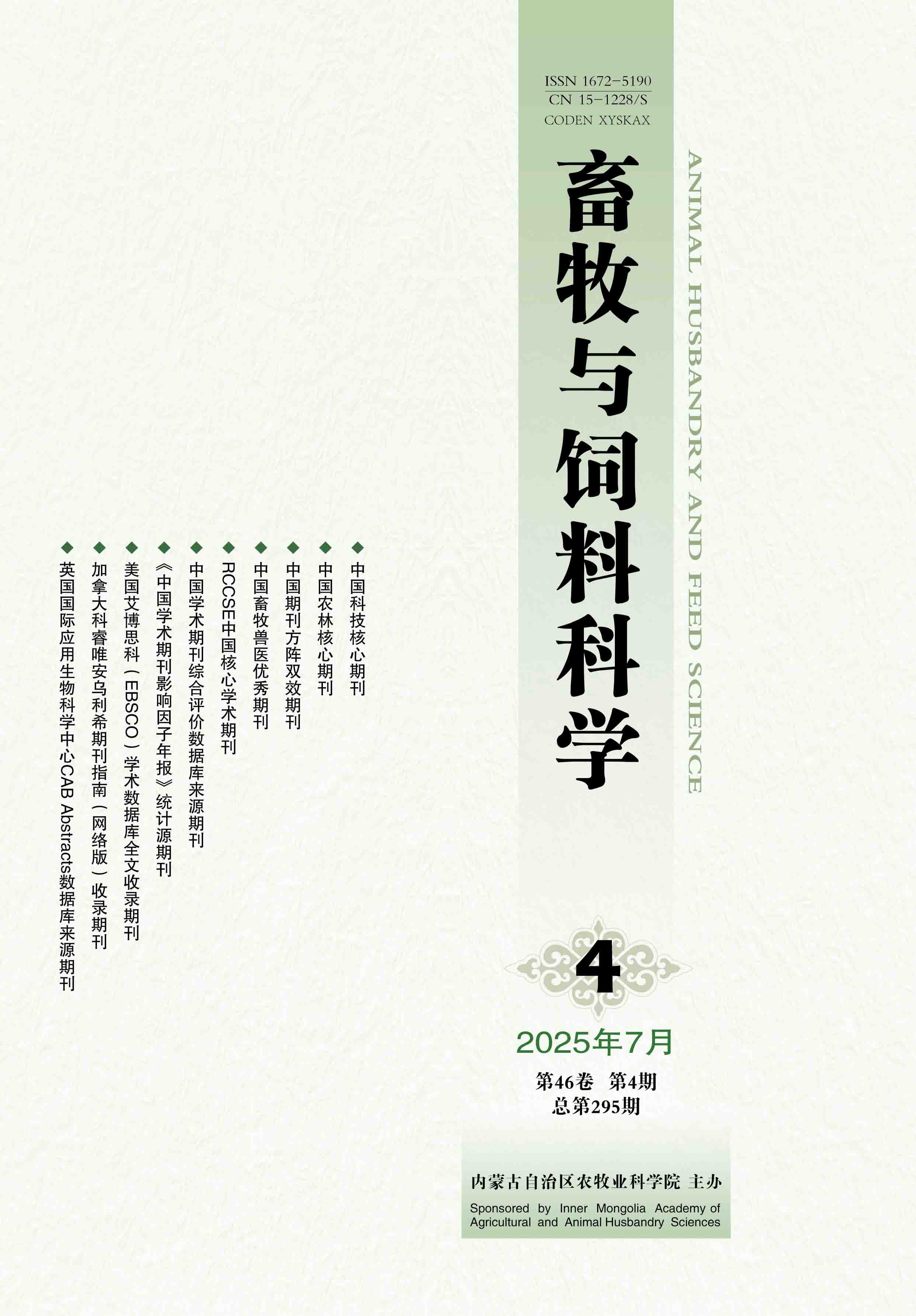Select
Effects of Grazing Intensity on the Quantitative Characteristics of Different Plant Functional Groups in Desert Steppe
QUE Guoping, LONG Jinfei, WEI Zhijun, ZHANG Yong, ZHANG Zhongqing, XU Shengyun, LIU Ruixia, ZHANG Yihui, ZHANG Xiaomin, ZHANG Xinyu
2024, 45(1):
71-78.
doi:10.12160/j.issn.1672-5190.2024.01.011
Abstract
(
1469 )
PDF (1038KB)
(
110
)
Save
References |
Related Articles |
Metrics
[Objective] This study was conducted to assess the mechanism underlying the response of plant functional groups in desert steppe to different grazing intensities, and to provide bases for the rational utilization of desert steppe. [Method] The desert steppe distributed in Sonid Right Banner, Xilin Gol League, Inner Mongolia was chosen as the research object. Three grazing intensity treatments were set up, including a non-grazing (NG) treatment, a moderate grazing (MG) treatment and a heavy grazing (HG) treatment. Each treatment had 3 replications, with a total of 9 experimental plots. The stocking rates of the NG, MG and HG treatments were 0, 1.92 and 3.08 sheep unit/(hm2 · year), respectively, and the corresponding actual number of grazing sheep was 0, 5 and 8, respectively. From 2018 to 2020, the density, coverage, height and above ground biomass of the plant functional groups in the desert steppe were annually surveyed in mid August. The differences in the quantitative characteristics of the plant functional groups under varied grazing intensities were statistically compared. Furthermore, the grey correlation analysis was conducted between plant functional group and community under different grazing intensities. [Result] The highest number of plant species was observed in MG treatment, followed by NG treatment and HG treatment, which were 27, 25 and 19 species, respectively. Grazing significantly (P <0.05) increased the density of perennial forbs and decreased the density proportion of perennial grasses. The coverage of perennial grasses, annuals and biennials, as well as shrubs and semi-shrubs gradually reduced with the increasing grazing intensities. Grazing significantly (P <0.05) reduced the coverage of shrubs and semi-shrubs. The coverage proportion of perennial grasses as well as annuals and biennials gradually decreased with the increasing grazing intensities, while that of perennial forbs elevated with the increasing grazing intensities. Grazing significantly (P <0.05) reduced the height of perennial forbs as well as shrubs and semi-shrubs, decreased the height proportion of shrubs and semi-shrubs as well as perennial forbs, and increased the height proportion of perennial grasses as well as annuals and biennials. Grazing significantly (P <0.05) reduced the above ground biomass of shrubs and semi-shrubs. Heavy grazing significantly (P <0.05) reduced the above ground biomass of all plant functional groups. Grazing increased the above ground biomass proportion of annuals and biennials as well as perennial forbs, and reduced that of shrubs and semi-shrubs as well as perennial grasses. In the NG treatment, perennial grasses as well as annuals and biennials were the functional groups that had the highest correlation with the community, both with correlation degrees of 0.76. In the MG treatment, the functional group showing the highest correlation with the community was perennial forbs, with a correlation degree of 0.77, followed by annuals and biennials, with a correlation degree of 0.75. In the HG treatment, the functional group exhibiting the highest correlation with the community was perennial forbs, with a correlation degree of 0.80, followed by annuals and biennials, with a correlation degree of 0.67. [Conclusion] Moderate grazing enriched the plant species in the desert steppe. Long-term heavy grazing significantly reduced the above ground biomass of all plant functional groups. Long-term grazing reduced the dominance of perennial grasses and increased that of perennial forbs in the community, converting the functional groups with the highest correlation with the community from perennial grasses as well as annuals and biennials to perennial forbs as well as annuals and biennials.








